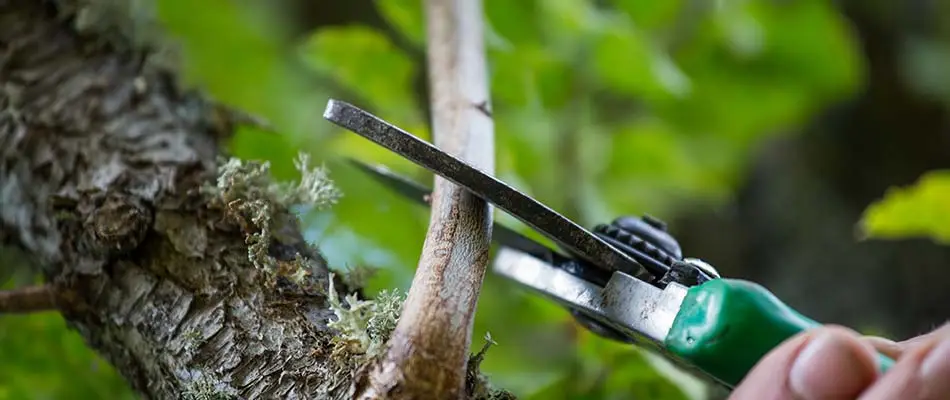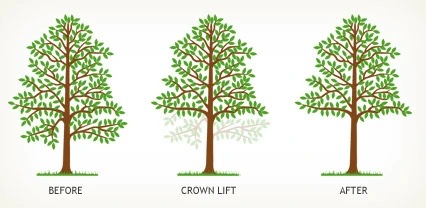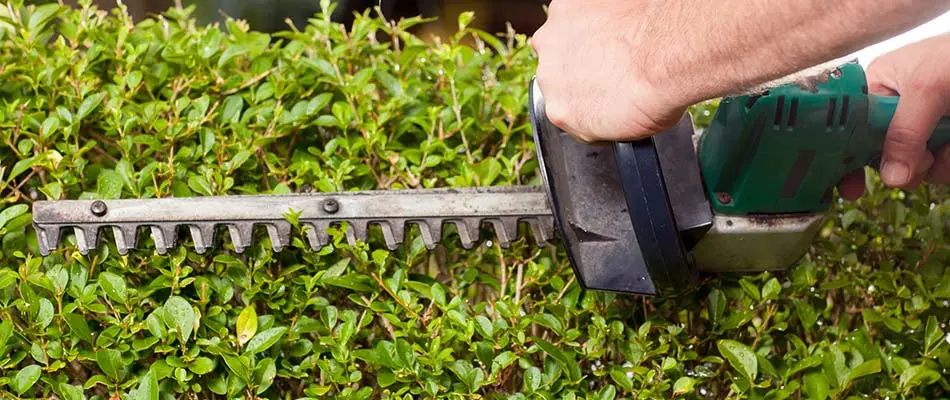
Our Blog
Use our blog as a resource of information pertaining to lawn and landscape maintenance information and services for your properties.

Use our blog as a resource of information pertaining to lawn and landscape maintenance information and services for your properties.
Hydrangeas are a very popular landscape plant because they have such beautiful flowers, and they’re generally pretty easy to take care of. But there’s also a ton of confusion about hydrangea care and how to keep them looking their best.
While they’re all related, they do not all have the same growth and bloom patterns. Some hydrangeas change color based on pH; some hydrangeas bloom on fresh growth from this year called new wood, and some flower on the growth they put out last year called old wood. It all depends on the species of hydrangea, so it’s helpful to know what you have and keep the plant info card handy.
When to Prune Hydrangea: You can prune hydrangeas that bloom on old wood right after they finish flowering. You can prune varieties that bloom on new wood in late winter or early spring.
How Can I Tell If My Hydrangea Blooms on Old or New Wood? there are a few clues that will help you determine if your hydrangea blooms on new or old wood.
The basic principles of rose pruning are the same, regardless of the rose type, but the timing of pruning, amount to remove, and objectives are slightly different, depending on the type. Here’s how to prune roses.
Materials you may need:
Why it’s important to prune roses: 4 basics to pruning roses
Basics of pruning roses:
When to pruning roses:
Pruning to remove dead and diseased growth:
Pruning to promote airflow:
Pruning to rejuvenate growth:

 Tree pruning is recommended for all ornamental/shade trees that are cultivated for landscape purposes every 3-7 years, depending on the species. Of course if there is damage from a storm, disease, or other situation, then we recommend pruning to remove the damaged/dead wood immediately so the tree can properly recover.
Tree pruning is recommended for all ornamental/shade trees that are cultivated for landscape purposes every 3-7 years, depending on the species. Of course if there is damage from a storm, disease, or other situation, then we recommend pruning to remove the damaged/dead wood immediately so the tree can properly recover.
The reason why trees in a landscape setting should be pruned on a routine basis is to ensure the health of the tree. It is far easier to remove a problem when the branch affected is small then wait until the problem spreads to a larger part of the tree, or the branch continues to grow and the later removal results in a misshapen tree that is no longer nice to look at.
Proper pruning can help take care of the following issues with branches:
The removal of these problems allows for the tree to continue growing in a manner that is sustainable…therefore living a longer and healthier life.
To say that a tree that is regularly cared for/pruned will have no problems is as unreasonable as saying a person who goes to a doctor for an annual exam will never become ill. However, similarly to seeing a doctor regularly, proper maintenance of your trees by a professional arborist can help to keep your trees healthy.
The primary reason why pruning is recommended for trees is to maintain and improve its health, or address a known issue. Though it is not the primary reason when done...

Pruning and Shrub Shaping
The spring flowering shrubs and Yew shrubs are ready for a trim! We began shaping and trimming last week and will continue working through all properties until complete….and then we’ll start all over again. J For the entire month of July, there is extra time added to all of our regular maintenance visits to accommodate the additional work.
The delayed spring weather, ample amounts of rain and periodic HOT days have caused nature to be slightly off kilter this year. My general assessment right now is that the normal sequence/progression of spring (forsythia bloom!) and early summer (shrub roses in full bloom!) that spans the time from about April 15-June 1st was shifted and consolidated to May 9-June 20th. In addition to the natural progression of spring was the great emergence of 2013—first tree leaves fully emerged on May 19th (about 3 weeks later than normal) and just 4 weeks later the shrubs are in need of trimming. Normally, there is a 6 week or more time frame between first full leaf emergence and trimming/shaping. Yikes!
Normally, we begin trimming shrubs the first week of June. By the first week of June most spring flowering shrubs have nearly completed their flowering, not this year though, the delayed spring also delayed flowering on many shrubs. Unfortunately—at the same time leaf/shoot growth was/is in full swing. For example, while lilacs...
Just complete the form below to get a pricing quote.
